This was published 6 years ago
The top 10 best destinations of the decade named by Traveller
By Traveller
To mark Traveller's 10th anniversary, we reveal our list of 10 top destinations that have consistently rewarded Australian travellers over the last decade.
It's a cruel task. No scientific scale can demonstrate that Santorini sunsets rank higher than Vienna concerts or the latest Lima restaurant in our affections, let alone determine the relative merits of France versus China – neither of which, perhaps rather astonishingly, made it onto our final list.
Besides, travel is a personal pursuit. Some commend efficiency and tidiness in countries, others chaotic exuberance. Some appreciate rugged landscapes and far horizons, others cafes and skyscraper canyons. Do you like an arty country or an ambitious one? Zen or zany? Our top pick, Japan, as it happens, is both.
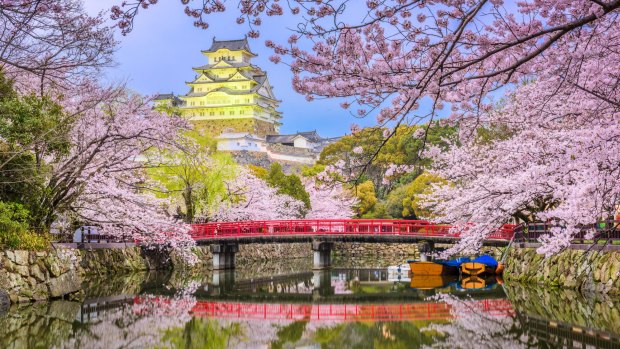
Himeji Castle during spring cherry blossom season, Japan.Credit: Alamy
Going by statistics, we should have included Indonesia, Thailand and Singapore, which are among the countries most visited by Australians. We wanted more than predictability, however. We focused on the feel-good factor, consistently delivered over the last decade to Australian travellers.
We pondered why we love certain countries, sometimes despite their evident frustrations and political shenanigans. We also considered how each has evolved (or indeed like Myanmar, emerged) over time, though many of our love affairs with countries are due to expectations pleasurably met.
Readers too might argue for replacements, but we hope you won't deny that our chosen nations are a delight to explore and enjoy (and Traveller readers have also named their own top 10 destinations of the decade - read those results here). Each destination has continued to inspire us over the last decade, and we trust they inspired you, too – and continue to do so for decades more.
Brian Johnston
1 JAPAN
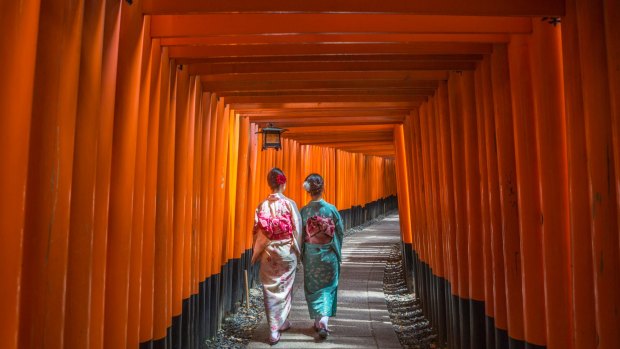
Credit: Alamy
By Ben Groundwater
Japan hasn't changed. Not for us, anyway. This is a country that marches to the beat of its own taiko drum, with a deeply ingrained culture that has been shaped and solidified over millennia. Little has been altered in the past 10 years, and certainly not for the benefit of us.
What has changed about this amazing country is our appreciation of it. In the last decade, Japan has gone from a fringe destination to a mainstream juggernaut that is something of an Australian obsession.
It doesn't matter who you talk to – foodies, skiers, fashionistas, hikers, city slickers, music fans, history buffs, culture vultures and more – everyone wants to go to Japan.
And that's understandable. This is, after all, a country with so much to offer visitors, so much to amuse and confuse and delight. It's a place of wild contradictions, of harmony and chaos, of tradition and invention, a place where you feel perfectly safe at all times despite never really knowing what's going on.
That's why it's our No. 1. That's why we're honouring it. No other country, in our opinion, has captured our collective imagination, has lured visitors and charmed them in the past 10 years like Japan.
And it began, in all probability, with snow. Australians were lured by cheap lift tickets and almost unbelievable amounts of soft powder. Once-exotic names like Niseko and Hakuba became as familiar as Aspen and Whistler. You're going to snowboarding in Japan? Of course you are.
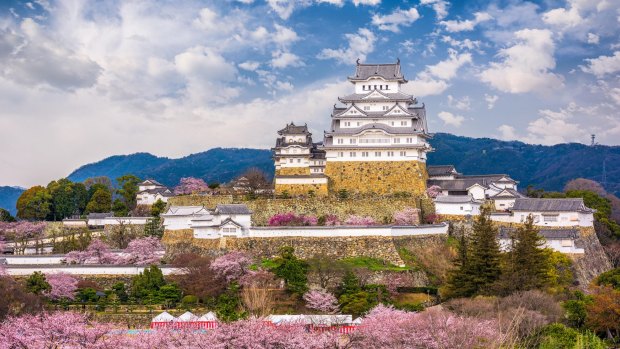
Credit: Alamy
But those visitors soon realised there's a lot more to Japan than ski resorts. This small country can become a lifelong obsession, a place you can return to again and again and still never quite understand it. Japan's cities are like no other cities on earth, huge, sprawling beasts that seem like they'll swallow visitors in their neon jaws; they'll chew up first-timers and spit them out like gristly meat.
Yet there are 20 million people in Tokyo, and yet every suburb feels like a village, the likes of Ebisu and Asakusa and Shimokitazawa with their quiet backstreets, these havens of small-scale harmony amid what should be so large and intimidating.
Japan, too, is a place of natural beauty, from the national parks of Hokkaido to the beaches of Okinawa. It's also a place of ancient tradition, where Shinto temples adorn mountaintops in Koya-San, geikos roam the streets of Kyoto, and old teahouse districts remain in Kanazawa.
Japanese culture seems so cloistered and opaque, and yet you can step straight into it. Grab a mic and sing at a karaoke bar. Grab a chair and sit down in an izakaya. Join onsen-goers for a bath. Join salarymen for beers. Spend the night on tatami mat floors at a traditional inn.
And of course, there's perhaps Japan's greatest attraction: its cuisine. Food isn't part of life in Japan – it is life. It's art, it's creativity, and it's love. It's $500-a-head sushi restaurants and it's cheap-as-chips ramen joints. It's charred, smoky yakitori washed down with beer.
It's the sizzle of okonomiyaki; the crackle of tonkatsu. The food of Japan perfectly encapsulates the attention to detail and the desire for perfection that makes this country so great.
Japan is amazing, interesting, delicious and delightful. It's also the same as it ever was – and the same as it ever will be. The only difference is, we've found it. See jnto.org.au; traveller/japan
THE BEST OF JAPAN

Credit: Alamy
TOKYO One of the world's great cities, ultra-modern and yet traditional, where you could spend a whole lifetime and never be bored.
KYOTO The former capital is a beautiful oasis of temples and gardens, as well as boasting more Michelin stars per capita than any city in the world.
OKINAWA Japan's southernmost prefecture is a surprising group of tropical islands with a laidback atmosphere and a mix of Asian and American culture.
HAKUBA One of Japan's many great ski resorts, Hakuba is accessible by bullet train from Tokyo, and receives huge amounts of snow annually.
HOKKAIDO The northernmost island is home to bustling Sapporo and Aussie favourite ski resort Niseko, as well as some of the country's most sought-after fresh produce.
KANAZAWA A historic town with several well-preserved teahouse districts, this is the quieter, more relaxed alternative to Kyoto.
KOYA-SAN The Shingon sect of Buddhism was founded in this mountaintop village, where guests can stay in temples and experience life as a monk.
HIROSHIMA Though known historically for the events of 1945, modern-day Hiroshima is a friendly place of leafy streets and a cosmopolitan vibe.
OSAKA is known throughout food-obsessed Japan for its excellent cuisine – don't miss the chance to try fresh takoyaki, the fried octopus balls, from a street stand.
KUMANO KODO This series of pilgrimage walks through the mountainous Kii Peninsula near Osaka is becoming hugely popular among adventure travellers.
See also: Twenty things that will surprise first-time visitors to Japan
See also: Podcast: Japan - the world's weirdest and most wonderful destination
2 NEW ZEALAND
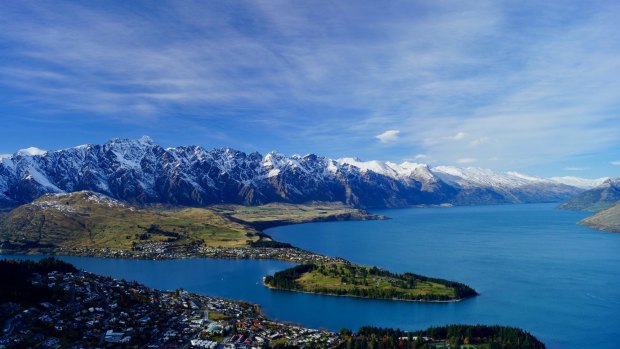
Credit: Gavin
By Michael Gebicki
Stretched across an area of 270,000 square kilometres, just slightly larger than the state of Victoria, New Zealand reads like a compendium of earthly wonders.
New Zealand has rainforests, raging rivers, trout streams, mountain peaks that disappear in cloud and ice, palmy beaches where the Pacific Ocean spills across the sand and volcanoes that spit fire and brimstone.
Along the west coast of the South Island, glaciers grinding downwards from the peaks of the Southern Alps have gouged deep fiords. This is also one of the wettest parts of the planet, a place where the forest floor is upholstered with moss, In the north of the same island is the Marlborough Sounds, where the sea has drowned a series of river valleys, leaving a labyrinth of waterways separated by forested fingers of land. New Zealand has some of the world's finest alpine walks and it's clean, green and wholesome. Breathe in just about anywhere in New Zealand and you feel like you just snorted air freshener. Not only does it come fully fledged with marvels, New Zealand puts a shine on its wonders with some of the world's finest boutique lodges.
It's also our No. 1 destination (and No. 2 on Traveller's destinations of the decade countdown). More Aussie residents visit New Zealand than any other country, and that's been the case for decades. Some of that is down to family reunions – there are a lot of Kiwis living on this side of the ditch – but most of it is a craving for something we don't have.
In a crowded world increasingly choked with traffic, carbon emissions and electronic bleatings, New Zealand can feel like a page from the past. Its population of 4½ million is concentrated in a few major urban centres.
The rest of the country feels like a cross between a golf course, a sheep pasture and a wilderness reserve. There are few other places that so stridently summon you out into the great outdoors and persuade you to do something intrepid.
For the traveller in search of adventure – whether that adventure involves crampons and an ice axe or a seat by the window from which to watch the scenery unfold – there's nowhere else quite like it. See newzealand.com/au/; traveller/new-zealand
THE BEST OF NEW ZEALAND
DOUBTFUL SOUND Every bit as gob-smackingly spectacular as neighbouring Milford Sound but far less popular.
WHANGANUI RIVER Born on the slopes of the volcanoes south of Lake Taupo and sacred ground for the Maori people.
ARROWTOWN TO MACETOWN A road carved by gold prospectors from the sheer hillsides along the gorge of the Arrow River.
ROTORUA Smack on top of the most violent segment of the Taupo Volcanic Zone, and surrounded by forests where spring-fed streams sprint into lakes.
WINE TOURING, OTAGO The world's most southerly winegrowing area, the river valleys around Queenstown are the source of some of the world's greatest pinot noir wines.
LUXURY LODGES From the palmy Bay of Islands in the north to the frosty frontiers of Fiordland, our trans-Tasman neighbour has raised the boutique lodge to an art form.
MARLBOROUGH SOUNDS A jigsaw-like seascape of drowned river valley at the top of South Island with sheltered coves, peninsulas, islands and channels.
THE MILFORD TRACK A 54-kilometre, four-day dazzler that begins with a launch trip across Lake Te Anau, climbs into beech forests along the Clinton River and crosses the 1073-metre Mackinnon Pass.
HELI HIKING, FOX AND FRANZ JOSEF GLACIERS Hikers are transported to a mid-section of the glacier, fitted out with crampons and steel-tipped staves and guided across these creeping monsters.
BLACK WATER RAFTING, WAITOMO CAVES Dressed in a wetsuit and equipped with a cavers' helmet and an inflated inner tube, rafters leap into an underground river and float through the caverns of glowworm-studded Ruakuri Cave.
See also: Twenty things that will surprise first-time visitors to NZ
3 CANADA
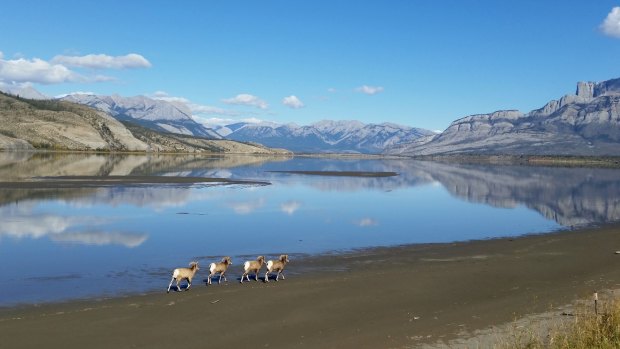
Credit: Leo
By Katrina Lobley
O Canada! From your picture-perfect peaks to your pin-up Prime Minister, you take good looks to a giddy level. It's 30 years since my first wide-eyed trip overseas but I still remember standing in Banff, catching snowflakes against a backdrop of the soaring Rockies.
Inadequately clothed but kind of awestruck, I allowed the snow to frost my hair and frozen fingers.
My main memory from that trip, however, is how much Canada felt like Australia. Both countries have vast interiors, a population that clings to its edges, climatic extremes, deadly wildlife, sophisticated cities and a larrikin humour. Same-same but different – that's why I keep returning, clocking up wilder and wilder adventures.
I've snuggled into a hide in the moss-draped Great Bear Rainforest, waiting in silence for the eponymous residents to turn up and start fishing for dinner.
In Dawson City, a place where pretty much anything goes, I encountered sublime poetry (thanks to the Bard of the Yukon, Robert Service, who scribbled away in a sod-roofed cabin here more than a century ago).
In the Bugaboos, a remote mountain range near Banff known to climbers for its sheer granite spires, I've heli-hiked to alpine meadows bejewelled with wildflowers and clambered over glaciers glittering like diamonds.
At the Calgary Stampede, I've watched man battle beast as the world's best bullriders try to stick for eight seconds in order to snag a share of millions in prize money.
Before arriving in Quebec, I worried about my lack of French. "Bonjour hello!" trill the Quebecois, waiting for the response as their language cue. In Montreal, I've eaten more poutine (hot chips, gravy, cheese curds) than is good for my waistline, sipped on many a craft brew and ventured to a sugar shack within a maple forest where the colourful owner keeps a wolf as a pet. It's the stuff of fairytales – a feeling that overlays Quebec City where the multi-turreted Fairmont Le Chateau Frontenac, as grand as any castle, stands sentinel.
Go in winter just to whoosh down the high-speed toboggan ride betwixt hotel and river. Wild stuff, I promise you. See destinationcanada.com/en; traveller/canada
THE BEST OF CANADA
CHATEAUS AND HOTELS Canada is famous for grand fantasias such as the Fairmont Chateau Lake Louise and Fairmont Banff Springs Hotel but is home to avant-garde hotels too like Fogo Island Inn.
THE CANADIAN Train buffs can chuff from Vancouver to Toronto on VIA Rail's The Canadian. Splash out on Prestige Class to retire to a double bed.
MUSEUM FOR HUMAN RIGHTS Head to the prairies to explore the Canadian Museum for Human Rights – an avant-garde landmark that opened in Winnipeg in 2014. See humanrights.ca
GREAT BEAR LODGE Stay at British Columbia's Great Bear Lodge between May and October or head to Churchill, Manitoba (via air until the rail line is repaired), from October to November for the polar variety.
LAKE LOUISE Lake Louise can be overrun by tourists in summer; hike 3.5 kilometres up to the Lake Agnes Tea House for a little serenity.
THE YUKON In summer, hire a recreational vehicle in Whitehorse and spend at least a week touring Yukon highlights such as Tombstone Territorial Park.
MONTREAL JAZZ FESTIVAL Catch past performances from Montreal's annual international jazz blowout at the archives within the Maison du Festival.
ICEBERG ALLEY Cruise or paddle around majestic icebergs in the area known as Iceberg Alley from late May to early June.
BANFF Ride the Banff Gondola to a 360-degree rooftop observation deck (unveiled in 2016) that overlooks six Rocky Mountain ranges.
NORTHERN LIGHTS In darker months, head to a northern lodge to catch the cosmic light show known as the Northern Lights.
See also: The 10 things Australians need to understand about Canadians
4 SRI LANKA
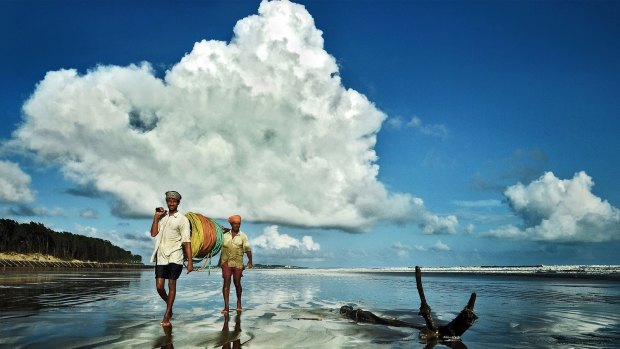
Credit: Pranab Basak
By Lance Richardson
Countries in the middle of civil wars are not, by and large, particularly attractive as travel destinations. Even if the conflict is hidden, out of sight of the main attractions, the very idea of it is enough to put off many visitors from even trying.
Such was the case with Sri Lanka, that tear-shaped island nation to the south-east of India. Starting in 1983, a battle between Tamil Tigers —a rebel insurgency group that wished to create its own independent state — and the Sri Lankan military continued unabated for 26 years.
It ended (at least officially) in 2009. That year, there were just 448,000 visitors to Sri Lanka. By 2013, according to the government, there were 1.2 million. With "peace" came prosperity – for the tourism industry, at any rate.
In the past eight years, hundreds of thousands of Australians have flocked to Sri Lanka and been gob-smacked by its beauty, affordability, and ease — and then flown home and told others about it. Indeed, Sri Lanka has remained very much a "word of mouth" place, a travel experience passed along between friends. That is part of its appeal.
Another is its size and variety. Roughly the landmass of Tasmania – that is, small – it nevertheless contains multitudes. The beaches in the south and east are some of the best in the world. The mountains, stretching between Kandy and Ella, are verdant with tea plantations, speckled with Buddhist temples.
The centre has a trail of ancient ruins: Anuradhapura, Sigiriya, Polonnaruwa. And Jaffna Peninsula, the seat of Tamil culture, offers a fascinating contrast to the rest of the country, which is largely Sinhalese.
The end of a war does not mean instantaneous peace, of course. Questions about human rights abuses have never fully gone away, and signs of the long struggle, as well as lingering prejudices against the Tamil minority, become more apparent the further north you go.
But it has only been eight years. Sri Lanka is still healing. And as it does, it offers one of the most dynamic and spectacular travel experiences on the planet. See srilanka.travel; traveller/sri-lanka
THE BEST OF SRI LANKA
GALLE FORT Built by the Portuguese in 1588, the fort is something of a cultural mish-mash, with Dutch and Sri Lankan residents, and at least a few vintage cars rumbling about.
TANGALLE A long, lonely stretch of soft sand and swaying palm trees? That would be Tangalle, possibly the most picturesque beach in the south, even after being hit hard in the 2004 tsunami.
MULKIRIGALA ROCK TEMPLE Not far from Tangalle, an ancient Buddhist monastery with giant reclining Buddhas, multiple compounds, and an incredible view from the top of the 205-metre rock.
ELLA The charming town of Ella is the ideal base for exploring the mountain country, including its tea plantations, which can be visited for inside tours.
SRI PADA The single most magical experience in Sri Lanka is a climb of Sri Pada, the sacred mountain, also known as Adam's Peak.
KANDY A major stop on most travel lists is Kandy, another gateway to the tea plantations. The Temple of the Tooth Relic is revered by Buddhists the world over.
SIGIRIYA Sigiriya is like Uluru if somebody built a temple on the top. Bizarre and gorgeous, it offers an unforgettable climb and some racy frescos.
ANURADHAPURA Without question, the most sprawling ruin in Sri Lanka is the Sacred City of Anuradhapura.
A9 HIGHWAY For many years, the A9 Highway was closed to civilian traffic, which effectively isolated the Jaffna Peninsula from the rest of the country. Now open, it offers a surreal road trip to the heart of Tamil culture.
NAINATIVU For particularly intrepid travellers, the island of Nainativu, with its towering Hindu shrine, is well worth the claustrophobic ferry ride.
See also: Two-hundred-metre high rock: Asia's own version of Uluru
5 SPAIN
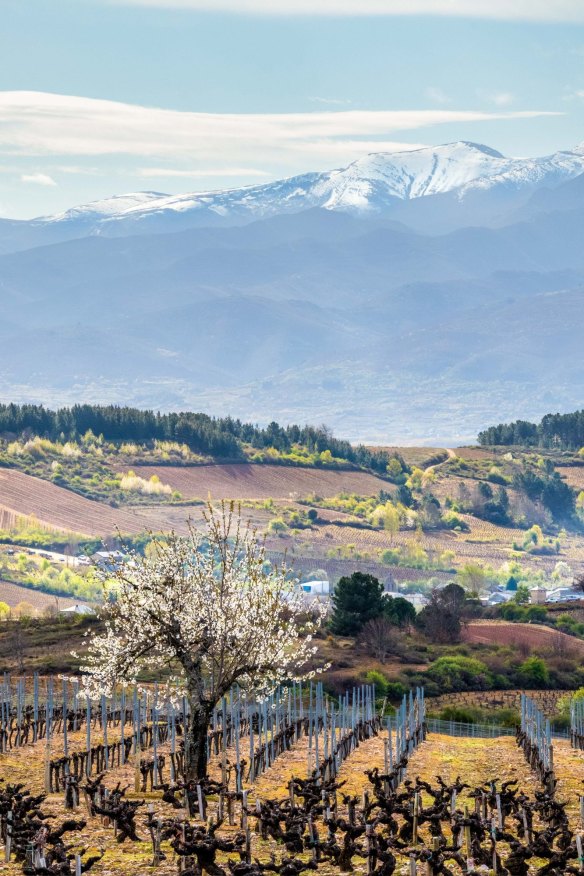
Credit: Rodney Saul
By Steve Meacham
What's your favourite Spanish destination? Madrid, the stylish, sophisticated capital? Barcelona, rivalling Berlin as the funkiest city in Europe?
Bilbao, with its world-famous Frank Gehry-designed Guggenheim Museum? Granada, a city of romance to rival Rio, Paris, Jaipur, Istanbul or Venice? Or Cordoba, site of La Mezquita – a history of the western world in one building?
My favourite is Seville. The inland city on the Guadalquivir (Spain's longest navigable river) now hosts appropriately proportioned cruise ships. But in 1492 it farewelled Christopher Columbus and his three-ship fleet on one of the greatest tourism adventures of all.
Spain has suffered hugely since the Global Financial Crisis a decade ago. The country's unemployment rate, at last count, is 18 per cent – and that's considered an improvement.
Yet, despite this social catastrophe, Spain posted a new record this time last year, having hosted 75 million visitors in 2016 – a 10 per cent increase on 2015.
Once again, Spain finished third on the "global tourism olympics medal table" – the perennial bronze medallist, attracting the most foreign visitors behind the US and France.
Spain's charm is timeless, and its tourism credentials extraordinary. It has more UNESCO World Heritage-listed sites than any other country on earth, apart from China and Italy.
It leads the world in having more Blue-flag beaches certified by the Foundation for Environmental Education than anywhere else (Turkey and Greece are second and third).
No other European country has surfing (on its northern Atlantic coast), skiing (Sierra Nevada, Formigal), Mediterranean pleasure islands (Majorca, Minorca, Ibiza and Formentera), Mid-Atlantic islands (Tenerife, Fuerteventura, Grand Canaria, Lanzarote) and festivals as varied as Pamplona's Running of the Bulls and Bunol's La Tomatina.
And yet my favourite holiday in Spain was spent well away from the iconic cities, idyllic beaches and famous chefs (seven Spanish establishments appear in the 2017 The World's Best Restaurant awards).
Years ago, we hired a simple, centuries-old cottage in a tiny Andalusian mountain village just 30 minutes from Ronda. We spent our time walking, having picnics and dining in rustic eateries. Sheer bliss – and I bet nothing has changed. See spain.info; traveller/spain
THE BEST OF SPAIN
THE ALHAMBRA Lonely Planet described Granada's World Heritage-listed palace as "Europe's love letter to Moorish culture". Wallow in the romance.
IBIZA The third largest of the Mediterranean Balearic Islands has been the summer party capital of Europe for half a century.
TOLEDO Set on an ancient hill over the vast plains of Castilla and La Mancha, Toledo is celebrated for its magnificent mix of medieval Arab, Jewish and Christian monuments in one walled city. It was also home to El Greco.
THE SPANISH PYRENEES Baqueira Beret, where the Spanish royal family spends the winter, recently celebrated its 50th anniversary.
LANZAROTE Lanzarote, one of the Canary Islands off the west coast of Africa, is a vulcanologist's Valhalla.
ART GALLERIES Spain is blessed with great art galleries, from Madrid's Prado to Bilbao's Guggenheim.
CAMINO DE SANTIAGO The Camino de Santiago – across northern Spain – was one of great medieval Christian pilgrimages (Santiago, the apostle St James, is supposedly buried in the Cathedral of Santiago de Compostela).
FOOTBALL Real Madrid, the current European champions, play at the Stadio Santiago Bernabeu – and there are tours if you can't afford to watch Christian Ronaldo in action.
PLAZA DE TOROS Even if you hate bullfighting, you should visit Ronda's Plaza de Toros (setting for the steamy Julia Migenes/Placido Domingo 1984 movie version of Bizet's Carmen).
DINING LATE Spaniards eat late. In summer, a family – even with young kids – might not sit down to dine at a restaurant until 10pm. Plan accordingly.
See also: Twenty things that will shock first-time visitors to Spain
See also: Podcast: The best country in the world for food
6 MYANMAR
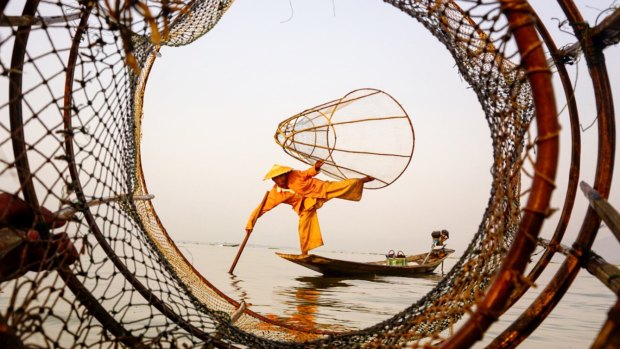
Credit: Josh Smith
By Kerry van der Jagt
The first time I see the sign – "Warmly welcome and take care of tourists" – I assume it's some kind of gag or note of whimsy. Then I notice the billboards all across the country, some even boasting a hotline number.
Besides being stunningly beautiful – stippled with stupas, blessed with beaches and upholstered in jungle – Myanmar is home to a stoic and kind population who will go to any measure to make you feel welcome.
But it wasn't always this way. Few countries have changed as rapidly in the last decade as Myanmar, stepping from the shadows of a brutal military rule to a burgeoning democracy, putting out the welcome mat and building a tourism industry.
As the new cool kid on the tourism block the transition has been swift, but Myanmar still has problems to solve – from infrastructure to human rights abuses against Rohingya Muslims and disappointment in Aung San Suu Kyi. Over the next decade, tourism can play a positive role in improving the economy and raising international awareness.
Poised between the old and the new, a visit feels like unwrapping a surprise package, where you never know what you'll uncover next. Perhaps a teahouse tucked into the side of a mountain or a gold-platted pagoda studded with diamonds.
On the flipside, wander the streets of Yangon to see colonial-era buildings being converted into gracious hotels and contemporary galleries bursting with counter-culture artworks.
Interested and engaging locals are the one constant, always ready with an exuberant "ming-a-la-bar", meaning hello or "it is a blessing". See myanmartourism.org; traveller/myanmar
THE BEST OF MYANMAR
BAGAN The temple studded plains of Bagan, best seen at sunrise from the basket of a hot-air balloon.
IRRAWADDY RIVER See the Irrawaddy River by luxury cruise ship, travelling between Mandalay and Pyay, stopping at UNESCO-listed sites and visiting out-of-the-way villages.
INWA Explore the old Burmese capital of Inwa (Ava) – travel the five-kilometre circuit by horse-drawn cart.
FOOD Burmese cuisine is a smorgasbord of fragrant curries, crunchy salads and sticky desserts. Don't miss trying a tangy tea leaf salad.
INLE LAKE Inle Lake is a 22-kilometre swatch of blue where you can join a cooking class, shop at the floating markets or visit a winery.
SHWEDAGON PAGODA Shwedagon pagoda – the 99-metre high, gold-plated, diamond-encrusted pagoda – is the most famous landmark of Yangon and holiest site in the land.
MANDALAY Not just a Rudyard Kipling poem, but a former royal capital famous for its royal palace and Kuthodaw Inscription Shrines aka the "world's biggest book".
COASTLINE There are 2000 kilometres of unspoiled coastline fronting the Bay of Bengal and the Andaman Sea.
HERITAGE A rich cultural heritage is represented by 135 ethnic groups spread across 14 provinces. A multi-day trek to visit hill tribes can be arranged.
U BEIN BRIDGE The 1.2-kilometre bridge, spanning Taungthaman Lake near Amarapura, is said to be the world's longest and oldest teak bridge.
See also: The 20 must-do highlights of Myanmar
7 PERU
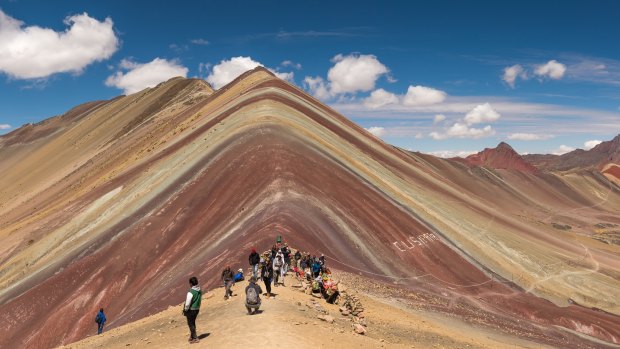
Credit: Ben Cooper
By Ute Junker
For far too long, Australians have been daunted by the prospect of travelling to South America. From the beaches of Brazil to the Amazon rainforest, the boulevards of Buenos Aires to the icebergs of Patagonia, the whole continent seems so wild, so vast, so different, that is has been hard to know where to start.
Not any more. Increasingly, Australians are deciding that the first place they want to explore in South America is Peru. The number of Australian travellers heading to Peru has virtually doubled in the past decade, and it is not hard to see why.
Peru's signature sight, the Incan citadel of Machu Picchu, is arguably South America's most famous attraction, and it is one of those travel experiences that does not disappoint. However, Peru has so much more to offer. The ancient Incan capital of Cusco still dazzles, while the nearby Sacred Valley has plenty of fascinating sights, from salt mines to traditional Incan villages.
Then there are the country's jaw-dropping natural wonders, from the well-known Lake Titicaca, with its famous floating islands, to the underrated, such as the magnificent Colca Canyon.
Peru is a destination that can be done on a budget, but its luxury offering has also expanded significantly over the last decade. Choose from a range of indulgent hotels, or ride the rails on the new Belmond Andean Explorer, travelling from Cusco to Lake Titicaca.
And then there's the food. For many years, Peru's thriving food scene stayed under the radar, but the secret is now well and truly out. Chefs such as Virgilio Martinez, Micha Tsumura and Gaston Acurio have built global reputations for their inventive cuisine, so bring your appetite with you. See peru.travel; traveller/peru
THE BEST OF PERU
MACHU PICCHU Abandoned cities don't come much more romantic than the Incan citadel, perched amid the cloud-draped peaks of the Andes.
MODERN CUISINE Lima's restaurants' ceviche and pisco sours are just the start of the delights on offer in this gourmets' playground that has catapulted Peru into the global culinary spotlight.
CUSCO This Spanish colonial city of Cusco is literally built on the foundations of the Incan capital: a fascinating clash of cultures.
LAKE TITICACA There is something magical about the world's highest navigable lake, where locals live on floating islands made of reeds.
COLCA CANYON The awesome canyon is twice as deep as the Grand Canyon in the US.
THE INCA TRAIL One of the most famous treks in the world, and one of the most crowded. Try one of the equally inspiring alternatives: the Lares Trek, the Salkantay Trek or the challenging Choquequirao Trek.
BELMOND ANDEAN EXPLORER Book your trip on the new Belmond Andean Explorer, a luxury sleep train that travels from Cusco to Arequipa via Lake Titicaca.
NAZCA LINES Frustratingly little is known about these huge images on the desert floor, depicting dozens of different plants and animals.
THE SACRED VALLEY It is best known for its many Incan ruins, including those at Ollantaytambo, but there is plenty else to see in the Sacred Valley.
THE AMAZON Caimans and capybara, monkeys, parrots and sloths: the world's largest rainforest is home to some fascinating creatures.
8 BRITAIN
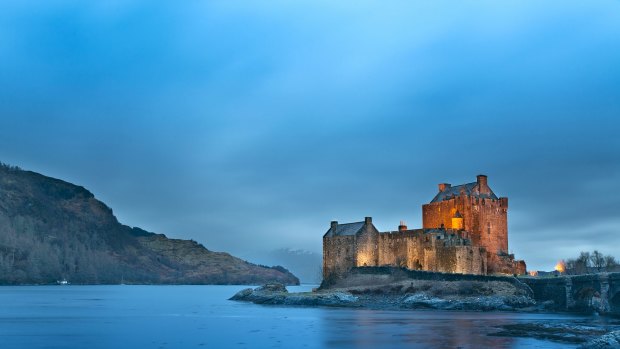
Credit: Ben Stevens
By Julietta Jameson
London and Manchester may have been besieged with horror in recent times, but Britain remains king in tourism, continuing to rack up record visitor numbers.
In the got-it-all stakes, few nations, if any, surpass London, one of the world's most glamorous and exciting cities. London leads a roster of smaller and unique metropolises, such as Edinburgh, Belfast and Liverpool, which each offers something unique.
Glorious countryside is within easy reach. Ancient and historic monuments abound.
And as if all that isn't enough, there's the ancestral connection that Britain has with so many countries that once were colonies, including Australia.
Despite shifts in this nation's cultural make-up over the last 50 years, a large percentage of Australian families still have something of an Anglo-Celtic background. In the last census, 36 per cent claimed English heritage and just over 9 per cent Scottish. (Eleven per cent claim Irish but sorry Ireland, this writer had to pick just one country for this piece.)
A pilgrimage to the old country – or, as it's better known, a gap year working in a pub in London – has been an Aussie rite of passage since baby boomers first got passports.
But in recent times, the incredible rise of genealogy websites has sparked an ancestry tourism trend, with Britain being an obvious beneficiary of the Australian part of that. According to VisitScotland, 1 million people visit Scotland each year, motivated by ancestral matters.
It's the sense of belonging that drives us. For those whose families have come to live on the Australian continent over a period of less than 250 years, our roots here are shallow. Over there, for many, they run deep.
And luckily, the Brits have, for centuries, been very good record keepers. The likes of Ancestry.com continue to tap further into those records, giving family-tree tracers amazingly clear markers of personal history and making it increasingly easy to source them. Importantly, these markers are not just names. They are also places of all kinds, from the stately manors to the corner pubs, where our forebears have trodden.
We've been seeking them out, and treading them ourselves, in increasing numbers. See visitbritain.com; traveller/britain
BEST OF BRITAIN
THE TITANIC MUSEUM This museum in Belfast, Northern Ireland, is a remarkably moving attraction immersing visitors in the world of the people who worked the early 20th-century shipyards.
THE SHARD The view from London's highest viewing platform allows an astonishing perspective on the River Thames and its relationship to centuries-old boroughs.
HIGH-SPEED TRAINS Countrywide Virgin Trains run Pendolinos out of Euston in London to 49 destinations across Britain. In August, the company introduced cut-price walk-up fares.
CUMBRIA ARCHIVE CENTRE An incredible collection of accessible regional records including wills, photographs, title deeds and much more collected from churches, families, schools, solicitors and societies.
SCOTLAND'S PEOPLE CENTRE This centre in Edinburgh, Scotland, is the official government resource for family-history research and includes an adopted children register.
LIVING MUSEUM OF THE NORTH At Beamish, the museum is the biggest open-air museum in Britain where you can immerse yourself in 19th and early-20th-century life through reconstructions that include horse-drawn buses and a working farm.
THE NATIONAL ARCHIVES The archives' site in Kew, Surrey, has a museum, bookshop and restaurant, set in beautiful grounds, all just a five-minute walk from the River Thames.
BRITISH LIBRARY LONDON Home to an original copy of the Magna Carta, this is the second largest library in the world in terms of items catalogued and has a fabulous roster of exhibitions and events.
HIGHGATE CEMETERY In Camden, London, this is a Grade I listed burial park dating to the 1800s and has some of the most beautiful monuments in the world in a woodland setting. It is the resting place of Karl Marx, Sidney Nolan and George Michael.
ANCIENT WORLDS The Manchester museum has fossils, archeological finds and a facial reconstruction of the 2000-year-old Worsley Man.
9 ITALY
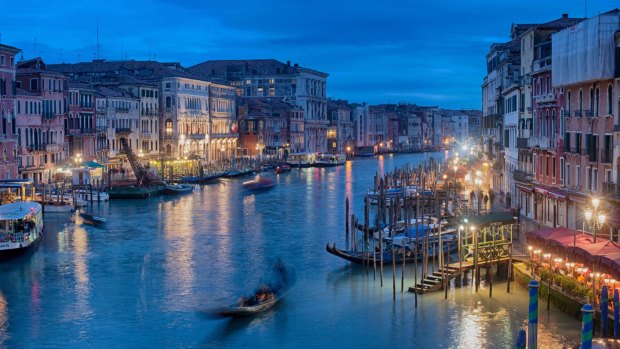
Credit: Mark Powell
By Brian Johnston
Pandemonium and passion, higgledy street parking as surreal as an art installation, gossiping shoppers, sunshine glittering on sea, lovers snogging under baroque facades, zebra-striped cathedrals and gelato shops at every corner: what's not to like about Italy? Well, perhaps the ever-swelling visitor crush, terrible tourist pizzas, exasperating opening hours and unhelpful museum workers.
However overcrowded Italy has become in the last decade, though, we just want more of its history, from ancient Greek and Roman ruins to medieval villages and elegant Renaissance towns. Italy also delivers a surfeit of wonderful artworks, and food to turn anyone into a glutton. Less recognised are its lovely landscapes: not just ridiculously beautiful Tuscany but plunging coastlines, smouldering Sicilian volcanoes and snowy Dolomite fangs.
It seems nothing changes much, which is why we love chaotic, dilapidated, sentimental Italy. But in fact, Rome has undergone a decade-long overhaul, with monuments cleaned, museums better lit and labelled, and hotels vastly improved. Infrastructure in smaller cities has been upgraded, cycle and hiking trails rolled out across the countryside, and farm stays encouraged.
Besides, Italy is much more than the sum of its glorious past, world-class art and endearing (and exasperating) stereotypes. Contemporary Italy is dynamic and chic, a place to find pleasure in nightlife, shopping and style icons from Lamborghinis to Armani suits and Vespas. Just as you think you've done Italy, you find something else about this most frustrating and fabulous country to make you fall in love with its beautiful life all over again. See visitaly.com.au; traveller/italy
THE BEST OF ITALY
ASSISI Hilltop pilgrim town Assisi – where St Francis and St Clare are entombed – provides a fine clash of holiness and history.
MILAN'S CITY CENTRE Milan's "Golden Quadrangle" of city-centre streets is a world epicentre of high-end shopping, flaunting flagship stores from Armani, Prada, Versace and Moschino.
FOOTBALL Calcio is Italy's other religion with singing and flag-waving during soccer matches providing unbeatable atmosphere. Forget the Colosseum: Rome's Stadio Olympico provides the ultimate circus.
COFFEE The hiss of an espresso machine is the quintessential sound of Italy. Caffe Pedrocchi in Padua was Europe's largest cafe at its 1831 opening, and became a famous haunt of writers. As a bonus, you'll discover Padua, one of Italy's many delightful small cities.
CINEMA The glory days of Italian cinema are as faded as Sophia Loren, but you can visit the famous Cinecitta film studios and relive iconic scenes on every corner of Rome.
AMALFI COAST The Amalfi Coast between Sorrento and Ravello features plunging vistas, sapphire seas, citrus groves and pastel-painted villages.
OPERA Nothing more Italian than a blast of Puccini or Verdi, and no better place to hear it than Milan's Teatro alla Scala, one of the world's great opera houses.
VENICE The living museum that is Venice might not showcase real life unless you're studying the 21st-century tourist, but it does envelop you in a fantastical ensemble of architecture, painting-crammed churches, art museums and arty festivals.
CARS Maserati, Lamborghini and Ducati are among the stylish wheels produced in northern Italy's Emilia-Romagna region.
SLOW FOOD Italy started the slow food movement. The Umbrian town of Orvieto is especially notable for its slow food ethos, which promotes regional, traditional cuisine and sustainable farming.
See also: 20 things that will surprise first time visitors to Italy
10 UNITED STATES OF AMERICA
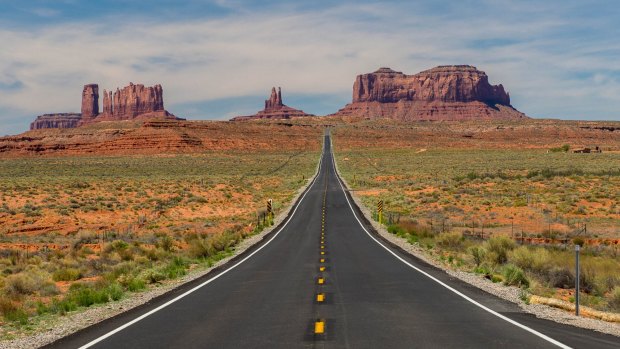
Credit: Ian Grant
By Andrew Bain
By any measure, it's been an eventful decade in the US, but ponder this: in 2007, back when George W. Bush was still president, less than half a million Australians travelled to the United States. Ten years on, and two presidents later, LAX airport immigration horror stories are almost commonplace, but still more than one million Australians now head to the States every year.
Its politics might divide like nowhere else on earth, but the dream that is the US remains as intoxicating as ever for travellers. The likes of the Grand Canyon, Hollywood, Route 66, the Statue of Liberty, Niagara Falls and even Central Park aren't just places, they're ideas, even mythologies, that seem to belong to the greater world. Visits here are as much homages as holidays – the excitement of driving into Yosemite Valley or Las Vegas isn't just about what you'll see, but about everything you've already seen of them from afar.
They're the sort places that have hung in our minds so long they feel timeless, but nothing ever stays the same for long in the US. It was 10 years ago that a glass-floored Skywalk was built out over the Grand Canyon, while a decade ago the Statue of Liberty remained closed to visitors in response to the 9/11 attacks. Today it's open again, and a Statue of Liberty Museum is being constructed.
The US is unquestionably a country of ever-growing contradictions – reputation versus reality, big cities and even bigger landscapes – but that's just part of the appeal that keeps Australians coming back. See visittheusa.com.au; traveller/usa
THE BEST OF THE US
YOSEMITE VALLEY Stand in Yosemite Valley looking up at Half Dome or El Capitan and you'll think a master artist created the place. You simply don't see shapes like this in nature, right?
SAN FRANCISCO Ride a street car, head to Alcatraz, and cross the Golden Gate Bridge ... classic moments in a classic city.
UTAH NATIONAL PARK Piece together the five national parks strung through southern Utah and you have a red-rock heaven of arches, canyons and hoodoos.
NEW YORK CITY If you're bored in New York City, check for a pulse. It's the world in a city – sublime theatre, top-notch sports, dining and arts, and an irresistible energy.
YELLOWSTONE NATIONAL PARK Explore mesmerising volcanic features one day, and go on safari the next inside the world's oldest national park.
GRAND CANYON It's not the largest canyon in the world, but it is the one that sits largest in the world's collective mind. From the rim, with its myriad viewpoints, it's almost two kilometres down to the Colorado River.
PORTLAND Get your hipster on and your hunger sated in this reinvigorated Oregon city with its fine restaurants and 500-plus food trucks.
EVERGLADES NATIONAL PARK A vast water world of alligators, manatees and kayaking visitors seeping into the southern tip of Florida.
NEW ORLEANS A city of great soul, but it's also the birthplace of jazz. Head for Frenchmen Street, which pumps out arguably the best live-music experience in the country.
ROUTE 66 The world's most famous road trip may no longer be an official highway, but there's no more evocative journey than the 4000-kilometre drive from Chicago to Santa Monica on the Mother Road.
See also: Twenty things that will surprise first-time visitors to the US
Sign up for the Traveller newsletter
The latest travel news, tips and inspiration delivered to your inbox. Sign up now.